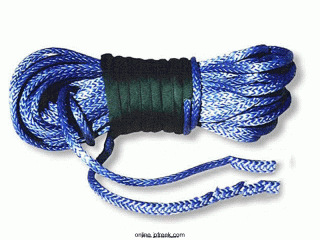In this article, I will assume the climber is beginning in an indoor gym so I won’t discuss all the aspects of necessary gear for outdoor climbing. The most important item, regardless of indoor or outdoor climbing, is a rope.
Rope is usually furnished by the climbing gym and already anchored in at the top of the climb. However, I should mention that there are two main types of rope: static and dynamic. The static rope is as the name implies; static and not very flexible. Static ropes are used for rappelling and rescue operations due to the strength and lack of stretching. On the other hand, a dynamic rope performs similar to a bungee cord in that it will flex and stretch as the climber applies weight to the rope. This is primarily used in climbing so that if a climber falls, the rope will stretch and offer shock absorption from the fall.
The next essential item of gear is a harness which the climber wears around the waist and legs. Harnesses are basically set up like a
diaper in that the waist belt is tightened above the hips and the leg loops attach around each leg to act like a seat when the climber is hanging by the rope. Most climbers will want a sport climbing harness that offers padding and small straps to increase comfort and range of motion.
The next most important item of gear is a pair of climbing shoes. Climbing shoes make your feet work like magic as they stick to any
surface you put your toes on. They tend to resemble very tight slippers that are covered in a sticky rubber material that allows the climber to have precise use of their toes and heels while climbing. One of the first lessons learned while climbing is to trust your shoes and believe that the shoes will stick to the rock.
Finally, a beginning climber may want to purchase a chalk bag with climbing chalk and a carabiner with a belay device.
Carabiners are a “D” shaped device that are used to attach the rope to the belayer through the belay device. Belay is the French word for “hold fast” that was used in the early days of climbing in Europe. In a climbing situation, there is a belayer who holds the rope for the climber and takes up slack as the climber moves upward.
